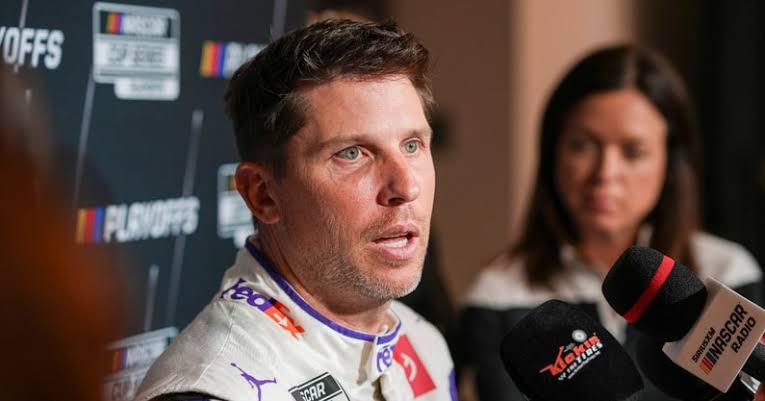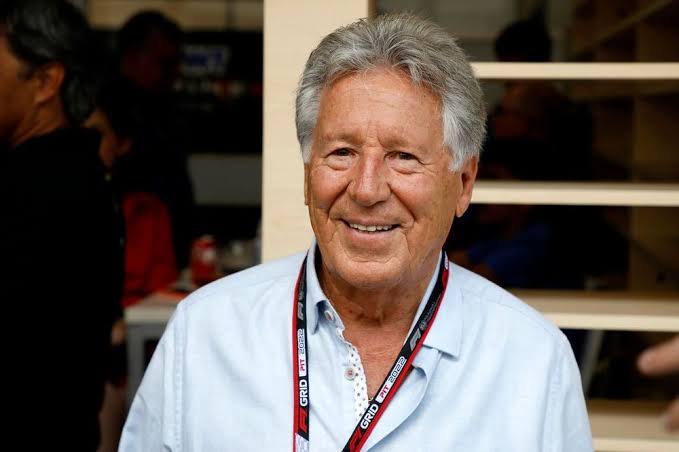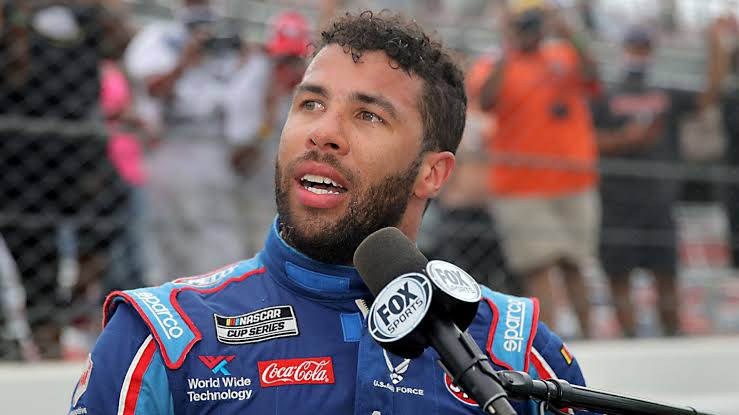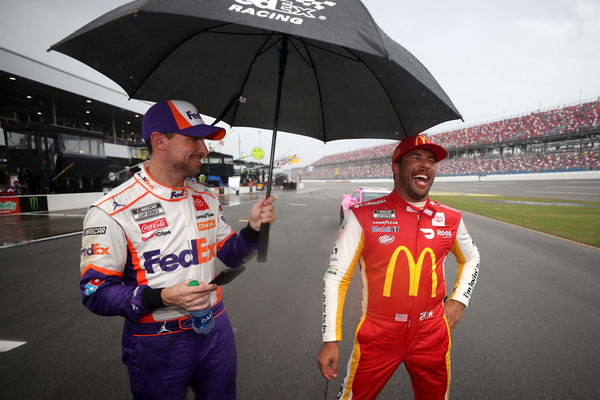As NASCAR gears up for the critical Round of 12 race at Talladega Superspeedway, a cloud of tension looms over the track following recent aerodynamic changes to the Next Gen car. These alterations, which NASCAR officials say are aimed at improving driver safety by reducing the risk of cars becoming airborne during high-speed crashes, have sparked intense debate within the racing community.
The changes, specifically designed to enhance the stability of the cars in the event of a crash, have not been universally welcomed. While NASCAR’s intention is to protect drivers, the modifications have been met with strong resistance from several prominent figures within the sport, including Joe Gibbs Racing driver Denny Hamlin, who has voiced his concerns about the impact of the changes on both driver visibility and overall competition.
Hamlin’s Fiery Response to the New Rules
Denny Hamlin, a veteran of the NASCAR circuit and currently fifth in the NASCAR Playoff standings, did not hold back in his criticism of the revisions. Speaking on his podcast, Actions Detrimental, Hamlin expressed his frustration with the new aerodynamic feature: a roof rail running over the front windshield, designed to prevent cars from lifting off the ground during crashes.
“We got briefed by NASCAR on changes that they’re proposing for Talladega, which includes running that roof rail over our front windshield. The drivers were not in favor of that,” Hamlin explained. His primary criticism centered on two key issues: the visual aesthetics and the practical implications for visibility during races.
“For one, it looks like ass,” Hamlin bluntly stated. “And second, it hurts visibility.” He elaborated that the roof rail’s placement obstructs the driver’s field of view, particularly during side-drafting, a critical maneuver at superspeedways like Talladega. This, according to Hamlin, presents a serious concern.
Superspeedways, such as Talladega and Daytona, are notorious for their high speeds and the close-quarter racing that makes side-drafting essential for drivers to maintain or gain position. Hamlin explained that the new aerodynamic feature, which covers approximately 15% of the windshield, is particularly problematic for drivers when they are trying to navigate side-by-side with other cars.
“We are constantly looking out at the right front corner of the windshield to gauge how close we are to each other and others,” Hamlin said, emphasizing the potential dangers of limited visibility. “And there’s just not a really good solution.”
Another issue Hamlin brought up is how the new roof rail will affect the ability to remove tear-offs from the windshield during the race. Tear-offs are thin layers of plastic that drivers pull off periodically to clear their view from debris and dirt that accumulates on the windshield. At a track like Talladega, where cars travel in tight packs at high speeds, debris is a common issue. According to Hamlin, the new feature would make it more difficult for drivers to effectively remove tear-offs, further impairing visibility and potentially putting drivers at risk.
Hamlin’s pointed critique has resonated with many within the sport, raising broader questions about how NASCAR balances safety innovations with the practicalities of racing. His concerns come at a crucial time as drivers prepare for the unpredictable nature of Talladega, where high-speed crashes, or “The Big One,” are always a looming threat.
Though NASCAR officials have maintained that the changes are essential for the safety of the drivers, the backlash suggests there is still room for improvement in how these modifications are implemented and communicated.
Elton Sawyer, NASCAR’s senior vice president of competition, addressed the challenges these changes present, acknowledging the complexities that come with racing at Talladega. “It’s a complicated situation when you’re running the speeds that we’re running, and you put multiple cars close together and how they affect each other,” Sawyer said.
Sawyer noted that NASCAR’s engineering teams had been working tirelessly to refine the changes, stating, “Our guys in the back have been working since Saturday night to recreate all of that and explore additional adjustments.
The controversy surrounding the Next Gen modifications adds an extra layer of tension to what is already one of the most nerve-wracking events of the NASCAR season. Talladega Superspeedway, with its high-banked turns and 2.66-mile oval, is a track that leaves little room for error. The slightest miscalculation can result in multi-car wrecks that take out numerous contenders in one fell swoop.
This race also holds significant implications for the drivers fighting for a spot in the Round of 8 in the NASCAR Playoffs. Currently sitting in fifth place, Denny Hamlin is positioned just below William Byron, Ryan Blaney, Christopher Bell, and Kyle Larson, who lead the standings. While Hamlin is still within striking distance of the leaders, any setback at Talladega could jeopardize his championship hopes.
The revised aerodynamic changes are just one more variable that drivers like Hamlin must contend with as they navigate the already treacherous waters of the playoffs. With little margin for error, the stakes are higher than ever as the field narrows and the championship race intensifies.
Looking Ahead: Will NASCAR Adjust?
As the debate rages on, the bigger question remains: will NASCAR heed the concerns raised by drivers like Hamlin and reconsider its approach to safety modifications? Hamlin’s vocal stance suggests that drivers are eager to be more involved in the decision-making process when it comes to safety innovations, particularly when these changes could impact the competitive nature of the sport.
NASCAR has a delicate balancing act ahead. On one hand, safety is paramount. The sport has seen significant advancements in driver protection over the past few decades, and it is crucial that the organization continues to innovate. However, drivers are the ones on the front lines, and their feedback is essential in ensuring that these innovations do not hinder their ability to race effectively.
As the countdown to Talladega continues, it will be interesting to see how NASCAR responds to the feedback it has received. Will the roof rail modification remain in place, or could there be further tweaks before the green flag drops? For now, all eyes are on Talladega, where not just the speed but also the future direction of NASCAR’s safety policies may come into sharper focus.
Denny Hamlin’s outspoken criticism of NASCAR’s latest aerodynamic changes highlights the ongoing debate between safety and performance in one of the most dangerous sports in the world. While NASCAR’s intentions to reduce airborne crashes are well-founded, Hamlin and other drivers have raised valid concerns about the impact of these changes on driver visibility and race dynamics, particularly at superspeedways like Talladega.
As the race approaches, the pressure is mounting not just for drivers but also for NASCAR officials who must navigate the fine line between maintaining competitive integrity and prioritizing the safety of everyone on the track. With so much at stake, both in the playoffs and in shaping the future of the sport, the decisions made in the coming days could have lasting implications for NASCAR and its drivers.
Denny Hamlin Fires Back At Nascar With Two Fierce Words Regarding Rules Changes Ahead Of Talladega




